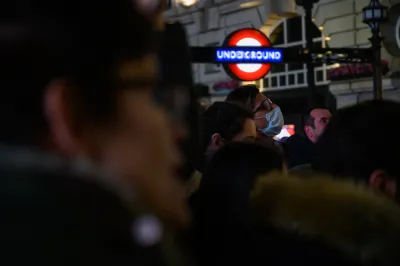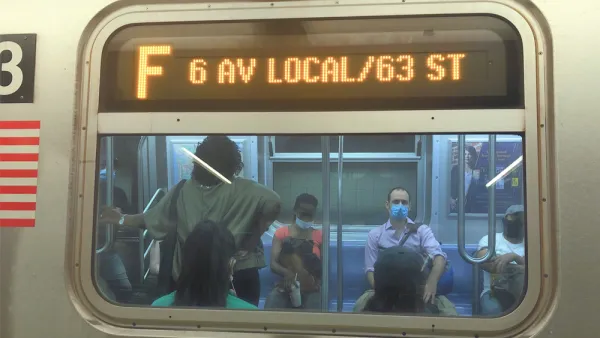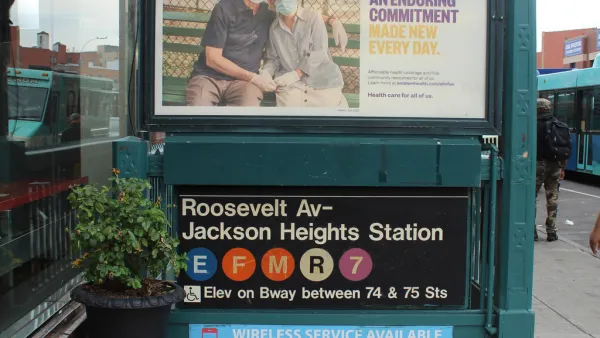Public transit cities around the world are operating well below pre-pandemic ridership levels, with many cutting service and no real clear idea about how and when a recovery will begin.

One of the first signs of the catastrophic consequences of the novel coronavirus in the United States in the spring of 2020 was the swift decline in public transit ridership. Since March 2020, U.S. transit agencies have cut service and sounded repeated alarms about a fiscal crisis and searched for ways to safely provide mobility options for essential and transit-dependent workers. Repeated infusions of relief funds from the federal government offer only a temporary reprieve from the fundamental realities of transit during the pandemic.
And transit isn't only struggling in the United States. As documented in a New York Times article authored by Somini Sengupta, Geneva Abdul, Manuela Andreoni, and Veronica Penney, a similar story is playing out in cities all over the globe.
In London, Piccadilly Circus station is nearly empty on a weekday morning, while in Delhi, the Metro ferries fewer than half of the riders it used to. In Rio, bus drivers are on strike, and in New York City, subway traffic is at just a third of normal volume.
The ongoing crisis facing public transit seems to compound concern. As noted in the article, the decline in transit ridership "spell disaster" for efforts to reduce public health risks like the greenhouse gas emissions that are causing climate change. "Public transit is a relatively simple remedy for urban greenhouse gas emissions, not to mention air quality, noise and congestion," according to the article.
The article seems primed for a deep dive, but stops short, probably because of the ongoing uncertainty about the questions of how to move to a post-pandemic normal. One source in the article, Mohamed Mezghani, head of the International Association of Public Transport, says transit systems should start upgrading transit systems now to attract riders back to transit in the future.
FULL STORY: After a year of the pandemic, public transit around the world is hanging by a thread.

National Parks Layoffs Will Cause Communities to Lose Billions
Thousands of essential park workers were laid off this week, just before the busy spring break season.

Retro-silient?: America’s First “Eco-burb,” The Woodlands Turns 50
A master-planned community north of Houston offers lessons on green infrastructure and resilient design, but falls short of its founder’s lofty affordability and walkability goals.

Delivering for America Plan Will Downgrade Mail Service in at Least 49.5 Percent of Zip Codes
Republican and Democrat lawmakers criticize the plan for its disproportionate negative impact on rural communities.

Test News Post 1
This is a summary

Test News Headline 46
Test for the image on the front page.

Balancing Bombs and Butterflies: How the National Guard Protects a Rare Species
The National Guard at Fort Indiantown Gap uses GIS technology and land management strategies to balance military training with conservation efforts, ensuring the survival of the rare eastern regal fritillary butterfly.
Urban Design for Planners 1: Software Tools
This six-course series explores essential urban design concepts using open source software and equips planners with the tools they need to participate fully in the urban design process.
Planning for Universal Design
Learn the tools for implementing Universal Design in planning regulations.
EMC Planning Group, Inc.
Planetizen
Planetizen
Mpact (formerly Rail~Volution)
Great Falls Development Authority, Inc.
HUDs Office of Policy Development and Research
NYU Wagner Graduate School of Public Service




























